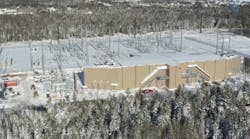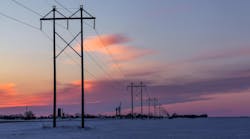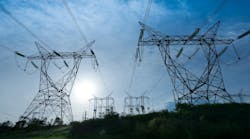ABB has successfully commissioned a power solution that will control the flow of power and enhance grid stability in the State of Michigan.
ABB’s low-loss and eco-efficient HVDC Light (high-voltage direct current) technology controls the power flow between the Upper and Lower Peninsulas of Michigan. Furthermore it provides dynamic voltage support, thereby increasing regional grid reliability and also enabling integration of additional wind generation. The HVDC Light station has been commissioned on schedule and handed over to the customer, American Transmission Co. (ATC). ACT reports that the project was completed slightly under budget at a cost of $125 million.
“The Mackinac station is the world’s first HVDC back-to-back system for transmission using voltage source converter technology. This is a milestone demonstrating how ABB can help customers achieve efficient grid control and stabilization,” said Hans-Peter Faessler, Head of the Grid Systems business within ABB’s Power Systems division.
ABB designed, supplied and installed the 200-MW back-to-back HVDC Light station in Upper Michigan. An HVDC back-to-back system comprises two HVDC converters connected directly to each other, without any DC transmission line between, making it possible to fully control the power transfer through the connection.
The voltage and reactive power control features of the system enable the integration of additional wind energy and stabilization of the network. Its ‘black-start’ capability allows for fast network restoration using power from the other end of the system in the case of a power outage.
“The HVDC device helped us avoid two near-certain outages since it began operation,” said Paul Roehr, director of operations for ATC. Previously, the transmission facilities in the eastern U.P. were tied to Lower Michigan, and the western U.P. facilities to northern Wisconsin. The U.P. facilities were separated at a substation near Engadine because the system could not support the flow of power across the width of the peninsula. The HVDC device now provides the support to connect the two regions.
“An unplanned outage on transmission facilities in northern Wisconsin almost surely would have caused customers in the U.P. to lose service, but the HVDC device provided system support, maintaining reliability by allowing a continuous flow of power,” Roehr said. “In one of those instances, some customers in northern Wisconsin also would have been affected.”


